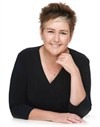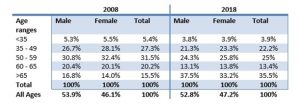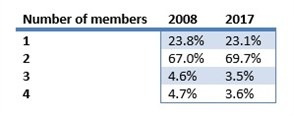Roy Morgan research finds increasing number of women with superannuation
Tracey Scotchbrook, SMSF Specialist Advisor and Director of Superology, discusses how Superannuation is growing amongst women, according to the latest data from Roy Morgan Research. In terms of having a Self-Managed Super Fund, however, many women will be a member of a SMSF because of their spouse, she writes.
 |
Research undertaken by Roy Morgan has reported that the number of women with superannuation accounts has increased and member balances are growing.
‘Women closing the superannuation gap’ published this month by Roy Morgan observed that the number of women with superannuation from 2008 to 2018 grew from 57.4% to 64.7%. The participation gap between men and women also narrowed from 9.1% to 4.3% in the same period.

This success is a result of the increasing number of new entrants into the superannuation system thanks to the compulsory superannuation guarantee system. With the high number of young people entering the superannuation system and more women returning to work after maternity leave, we are seeing a significant shift in superannuation dynamics and demographics.
Whilst participation rates and average account balances are increasing for both men and women, the balances for women still lag behind men.
Average superannuation balances:

Whist these figures are for superannuation generally, I was curious to see what has been the movement within the SMSF segment across the same time period?
The ATO statistical data does not publish data discretely separating member balance data and statistics between men and women. However we can observe what number of SMSF members are women and then consider those in the context of the overall SMSF data available.
The proportion of female to male members, despite the increase in SMSF numbers from 2008 to 2018 has remained fairly constant.
Member demographics – age ranges:

Summary Fund Data:

Whilst we have had significant growth in the number of SMSFs and SMSF members over the 2008-2018 years, the population of SMSF members is aging. In 2008 35.7% of SMSF members were aged 60 years or older. In 2018 this number increased to 48.9%, almost half the SMSF member population.
Consistent with the Roy Morgan research, the SMSF sector has seen growth in the average member account balances. What we don’t have is the available data to determine how this is broken down between male and female members.
Average and Median SMSF Assets

For many women they will be a member of a SMSF due to the influence by their spouse or partner. The number of two member funds remains significantly high at 69.7% as at 30 June 2017.
Membership size table – proportion of funds (%)

Joint research undertaken by Commonwealth Bank and the SMSF Association Women and SMSFs (2016) showed from those surveyed that 52% of women have become a member of a SMSF as a result of their spouse or partner. Where 30% of women would likely undertake a SMSF establishment on their own, men recorded a higher level of confidence at 77%.
The research also found “that 83% of men indicate they are very or quite confident in managing their SMSF, compared with only 62% of women.”
With the introduction of the transfer balance cap for pensions and total superannuation balance rules for non-concessional contributions I expect to see a shift in superannuation wealth, particularly in SMSFs with two members. Top up non-concessional contributions are likely to be made for spouses who typically hold lower account balances. This may be essential for some SMSFs in maintaining sufficient fund liquidity as well as part of a couples retirement planning. We will see the increase in the use of concessional contribution splitting. However the maximum amount that can flow from the member to their spouse’s account is $21,250 ($25,000 after 15% tax). This strategy will yield long term benefits and see women’s superannuation balances to grow over time.
There is increasing awareness amongst women on the superannuation shortfalls and issues they face. As the level of education on superannuation increases this will translate to greater engagement with superannuation by women. I know from discussions with other advisors that there is an increasing interest in SMSFs by professional women and those running their own businesses.
The ratio of men and women and number of two member funds have remained constant despite the increasing number of new SMSFs across the period of 2008 to 2018. Taking into account the changing demographics in superannuation generally and the growing engagement with women and SMSFs, will we see the statistics start change? It will be interesting to see what the SMSF sector looks like in the next ten years.
Tracey Scotchbrook is a SMSF Specialist Advisor and Director of Superology Pty Ltd with 15 years’ experience. Early in her accounting career Tracey had the opportunity to work with self-managed superannuation funds, setting her on the pathway to specialisation. She is actively involved in the SMSF Association (“SMSFA”) and is the former WA Chapter Chair and National Membership Committee Member. Her accreditations include: SMSF Specialist Advisor (SSA) with the SMSF Association, CA and CPA SMSF Specialist, and Charted Tax Advisor with the Tax Institute. Tracey is a regular presenter to industry professionals and trustees, commentator, educator, and writer. In 2009 Tracey was awarded the Praemium Scholarship by the SMSFA. Contact Tracey at tracey@superology.com.au